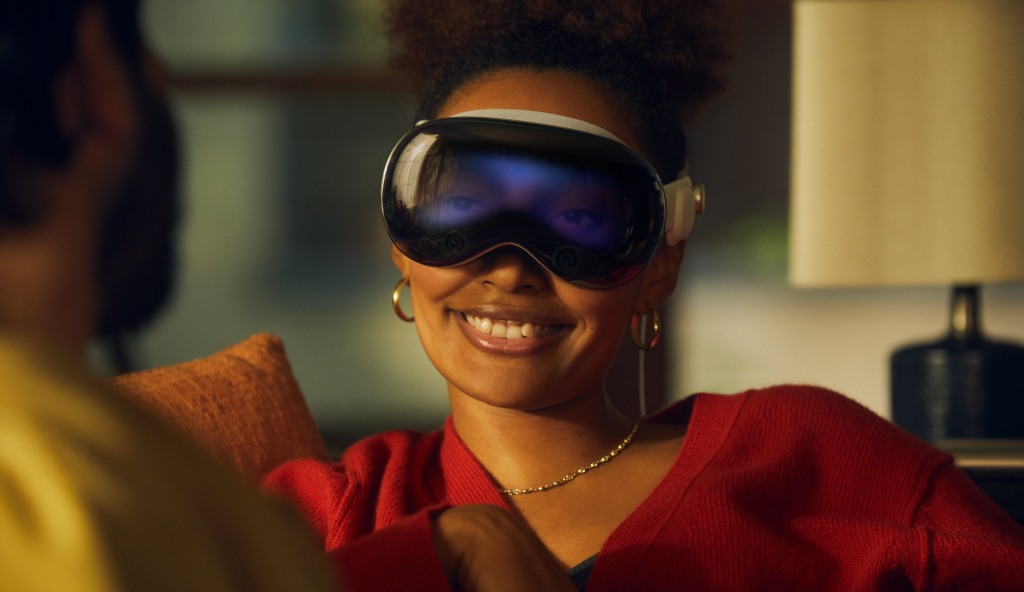Apple poised for metaverse takeover.
“Apple has done it again!” was the first sentence in the Financial Times report on the $3,500 (sorry, $3,499) Apple Vision Pro which promises two things that Apple is known for— to be a novel innovation in their array of products; and to drain your pocket.
But what appears to be another big glass scuba mask at first look has been lauded as the answer to what an augmented reality headset which undertakes the seamless blend of the digital and real world should look like.
Here’s a first look
Announced at WWDC 2023 on Monday, the Apple Vision Pro headset is a headset device that is meant to facilitate both virtual reality and augmented reality.
The headset is supposed to be a wearable MacBook which comes with all fixings users have come to expect on this Apple product. Apple’s apps like Safari, Books, messages, FaceTime, mail, and music are all controlled by the user’s gestures and eyes.
The exterior of the Vision Pro headset has a number of passthrough cameras that enable a complete AR experience, including hand tracking.
In the nature of Apple, the product appears slick and can light up to show the wearer’s eyes inside when someone is nearby. The pre-taped demo video of the Vision Pro shows a person wearing the headset walking around their home, opening and grabbing a water from their fridge, meaning that Apple intends that people will wear the device as part of their day-to-day lives.
The headset has LED lights, infrared cameras, and 4K displays. Since there is no restriction on the field of view, it is most likely not using the waveguide lens technology used in other augmented reality headsets. .
According to the announcement, Apple “built a micro-OLED display system that fits 64 pixels in the same amount of space as a single iPhone pixel. And packs 23 million into two panels the size of a postage stamp. That’s more than a 4K TV for each eye.”
As the headset sits too close to the face to accommodate eyewear, Apple has partnered with Zeiss to produce prescription Vision Pro lenses for people who use glasses. The device is powered by a separate battery that can be kept in the pocket.
“Vision Pro feels familiar, yet it’s entirely new.”
These were the words from Apple’s CEO, Tim Cook. It appears that Apple’s focus with the Vision Pro is to create a product that feels familiar yet new, that feels natural but augmented.
“In the same way Mac introduced us to personal computing and iPhone introduced us to mobile computing, Vision Pro will introduce us to spatial computing,” Tim Cook said Monday.
Unlike other existing VR headsets, Vision Pro soars in in its controller-free approach. It allows users to interact with app icons by simply looking at them using the new apple operating system VisionOS.
However, what has remained a burning question is what’s new about bringing the computer close to the eyes? Does it feel more personal?
Disney’s CEO attempts to answer. During the Monday presentation, Bob Iger appeared as a corporate partner on the launch. “The thing that struck me the most,” he said, “is how it will allow us to create deeply personal experiences.”
The Vision Pro can be likened to site cookies, it might seem. Because as cookies attempt to tailor our browsing experiences, so does the Vision Pro. We are in familiar terrain. We are talking about looking at eyeglasses with computer in them. Googles with iPhone in them. If you can own an iPhone or a laptop, maybe you will own a VR headset?
Read more: Louis Vuitton to sell $41,000 non-tradable NFTs to top customers
The question of the metaverse
During the two-hour presentation on Monday, Apple made no mention of the word “metaverse.”
Despite this, the company succeeded in demonstrating a vision of AR/VR that seemed to triumph over Meta’s avatar-filled metaverse touted by Mark Zuckerberg.
Apple’s announcement comes a few days after Meta’s release of its Quest 3 VR headset which received less excitement from the market.
Zuckerberg’s vision of the metaverse seems to be abandoned by the tech world. His metaverse project has only been successful in losing the company billions of dollars. Only upside seems to be Meta’s headset being $3,000 cheaper than Apple’s. But the CEO isn’t backing down just yet.
As Apple enters the metaverse market with its goggles, it has refused to explicitly use the word “metaverse.” The company has preferred the term “spatial computing” to refer to its technology.
The approach may be in a bid to distance itself from Meta. But both companies still have more hurdles to overcome in the coming months especially in the area of mass adoption and users seeing the need to buy goggles just to have a digital experience closer to their eyes.
Global sales of VR headsets decreased last year by 54%, according to International Data Corporation.
Mixed feelings?
Since the launch of the Apple Vision Pro, there have been mixed feelings in the market.
While some have opined that this product is the best thing since sliced bread and Apple should simply take their money, others are sceptical.
Mr Munster from Deepwater Asset Management said he was initially “shocked” by the $3,500 price point and drafted a note to clients emphasising his disappointment. After using it, he conceded his perspective had “totally” changed. “I think it’s priced right,” he said.
The sceptics have perched on the price point, calling it ridiculous for goggles. They have also mentioned that impressive as it is, it’s difficult to find a use case for why a consumer would need the Vision Pro.
And of course, the device was satirised through the lens of the Securities and Exchange Commission (SEC) lawsuits against Binance and Coinbase.
The Apple Vision Pro is slated for retail release in early 2024 for $3,500. Will the world’s largest tech company by revenue make a hit with spatial computing? We will wait in the metaverse for digital miracles.
Read more: We don’t need more digital currency, says Gensler after SEC files suit against Coinbase

Disclaimer: CryptoPlug does not recommend that any cryptocurrency should be bought, sold, or held by you. Do conduct your own due diligence and consult your financial advisor before making any investment decisions.




